A Legacy Of War At Cambodia Landmine Museum
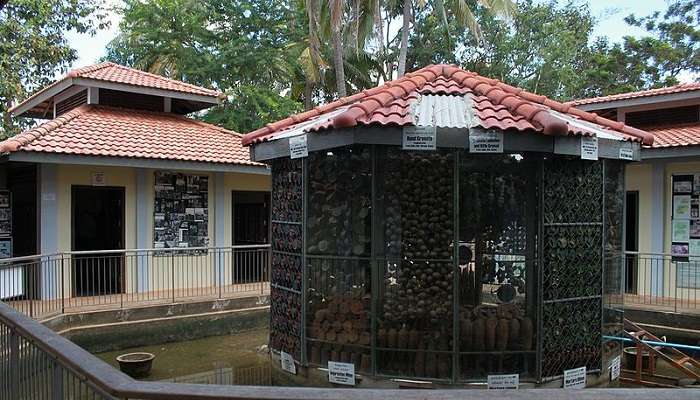
The Cambodia Landmine Museum stands as evidence of this struggle, which takes you to the powerful past of how Cambodia stood by the hardest times and healed its way to become what it is today. Established in 1996 by Aki Ra, a former child soldier who witnessed the horrendous effects of the landmines, this museum will offer you a window into the long shadow cast by these deadly devices. The Cambodia Landmine Museum is a powerful symbol of this hope, educating visitors on the ongoing impact of landmines while celebrating the dedication of deminers and survivors.
History Of The Cambodia Landmine Museum
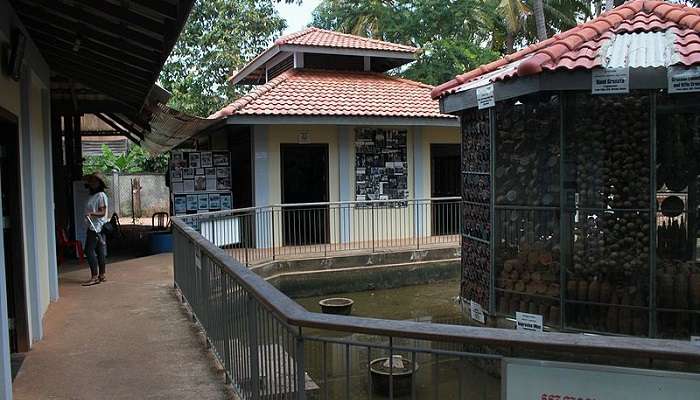
The museum’s story is closely linked to Aki Ra, a former child soldier who witnessed firsthand the devastating impact of landmines. After the Khmer Rouge regime’s fall, Ra dedicated himself to clearing these deadly devices from his homeland. Despite the devastating scene and the experiences, Aki Ra started collecting all the deactivated mines, using them to raise awareness and funds for his demining efforts. In 1996, Ra established the Cambodia Landmine Museum on the outskirts of Siem Reap. Initially, the museum operated from a makeshift location, showcasing Ra’s collection of defused mines and unexploded ordnance (UXO).
The fund collected from the entry fees directly supported Cambodian Self-Help Demining (CSHD), an NGO Ra founded to clear landmines and improve the lives of those affected.Both the museum’s success and Ra’s growing reputation gained international recognition. However, in 2007, the Cambodian government ordered the museum due to concerns about safety regulations and the presence of live landmines on display. All this didn’t stop Ra from showcasing the people’s suffering in the past and raising awareness surrounding the cause. Following the closure of the former location, Ra secured a new museum location at the Banteay Srei temple complex, further north of Siem Reap.
Must Read: Hotels In Cambodia
About Cambodia Landmine Museum
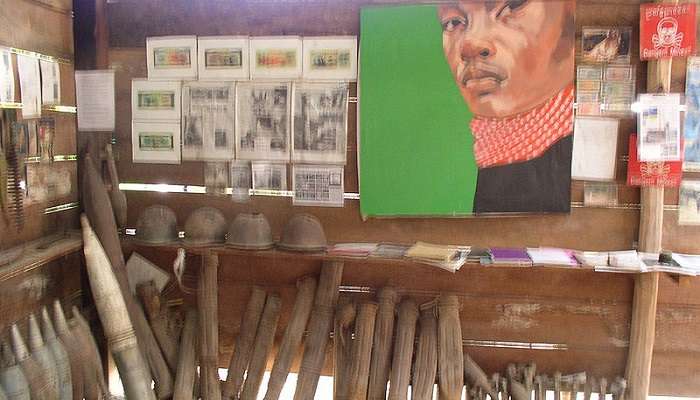
If you are planning to visit the museum, being aware of the Cambodia Landmine Museum opening hours and the Cambodia Landmine Museum entrance fee is an absolute must. This ensures proper planning of your visit so you don’t visit during the closed museum hours.
Cambodia Landmine Museum Opening Hours
The museum opens at 07:30 AM and closes its doors at 05:30 PM.
Cambodia Landmine Museum Location
The Cambodia Landmine Museum is located within Angkor National Park, 25 kilometres north of Siem Reap, near the Banteay Srei Temple complex. Its exact location is 67, Phumi Khna, Cambodia.
Cambodia Landmine Museum Entrance Fee
The museum’s entry fee for adults is $5. There is no charge for children under 12 and Khmers.
Ideal Time To Visit
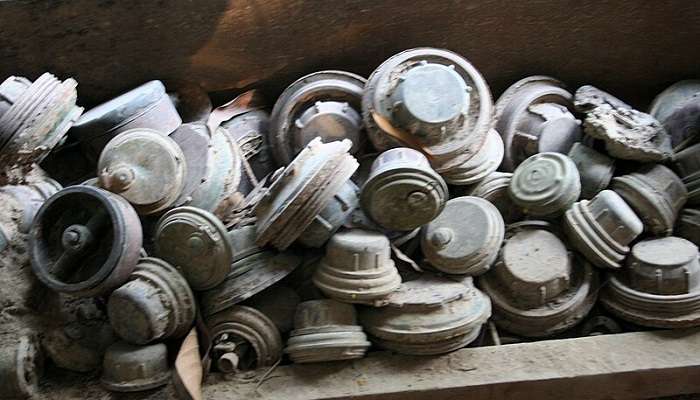
The Cambodia Landmine Museum is open year-round, but the peak season is from November to April. It is also a dry season, so you will not have to worry about rainfall. As a tourist, you just want to explore the popular sightseeing spots in a new country without the obstruction of heavy rainfall, and the autumn inclining towards the winter season is the best period for it. Consider visiting during weekdays or early mornings/late afternoons to avoid crowds.
Suggested Read: Cambodia Beach Resorts
How To Get To Cambodia Landmine Museum?
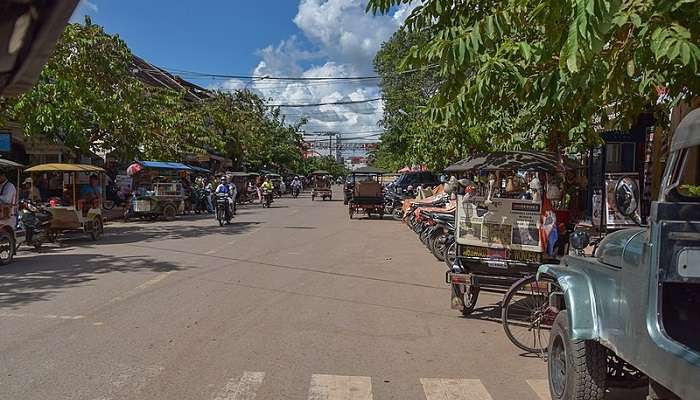
From Siem Reap, there are several accessible and affordable transportation options to take you to the Cambodia Landmine Museum. Some of the most popular ones include:
Tuk Tuk
This is a staple local transportation mode throughout Cambodia and possibly one of the cheapest. You can negotiate a round-trip fare. But, you must discuss the rates before you board the ride. The drivers will wait until you are done exploring the museum to take you back to your hotel.
Paid Taxi
You can go for the paid taxi as it will be convenient. You can ask your hotel or your tour operator to arrange for it. Do not forget to carry cash, in case.
Bicycle or Motorbike Rental
For the adventurous traveller, renting a bicycle or motorbike allows for a scenic journey to the museum. However, be aware of traffic conditions and ensure you have proper safety gear.
Things To See At Cambodia Landmine Museum
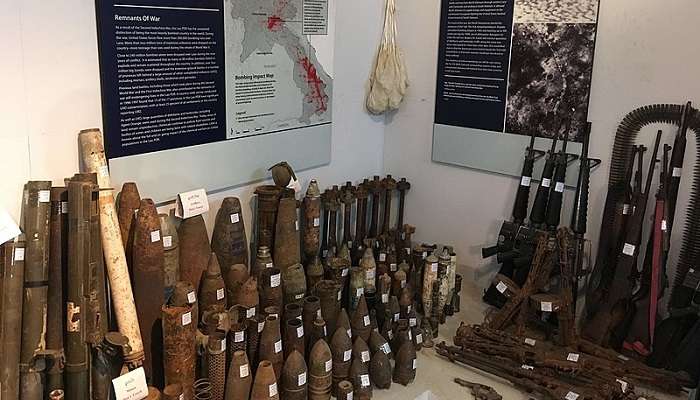
The Cambodia Landmine Museum is divided into four distinct galleries, each meticulously curated to tell you the story of landmines in Cambodia. Here’s a breakdown of each gallery and what to expect in each:
The Legacy Of War
The exhibit explores the extensive use of landmines and the decades of conflicts that led to the devastating war. Visitors witness different kinds of landmines employed during the wars alongside maps of the affected areas. This exhibit gives visitors a reality check of how extensive and devastating the whole ordeal was.
The Impact Of Landmines
This section focuses on the devastating human cost of landmines. Displays at the museum depict the lives shattered by these weapons, showcasing prosthetics used by survivors and stories of amputees. You can also get a closer look into the impact of agriculture and development and how landmines affect a place’s economic status.
Mine Clearance
The third section of the mine is the hardest to go through. You get to witness the complex and dangerous process of demining. Learning about demining techniques from a close point of view is one of the most educational experiences in which to indulge. You can also pay homage to the deminers who lost their lives performing their duty.
Education And Awareness
The final gallery focuses on the ongoing efforts to educate Cambodians about the dangers of landmines and raise awareness internationally. You can also take a closer look at the NGOs’ work and promote tourism along the way. The last exhibit brings together and completes your cycle of exploring the museum.
Suggested Read: National Parks in Cambodia
Future of the Cambodia Landmine Museum
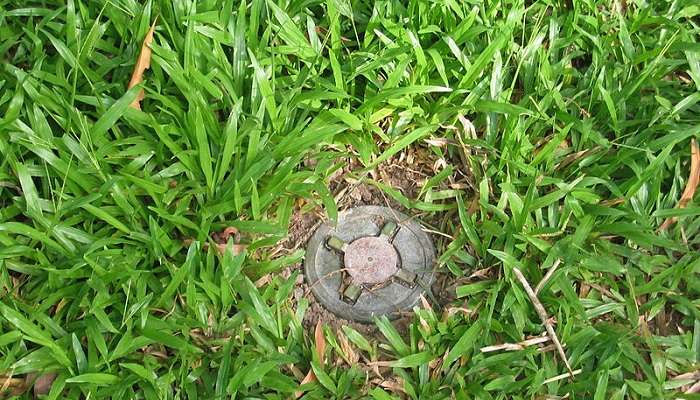
The Cambodia Landmine Museum’s future remains uncertain with the ongoing demining efforts. While significant progress has been made, thousands of square kilometres of land remain contaminated. The museum is a stark reminder of the human cost of war and the unending spirit of those who continue to rebuild their lives and the nation.
Despite Aki Ra’s death, his legacy will be continued by the NGOs and volunteers working day in and day out to introduce remarkable policy changes. With the growing tourism in Cambodia, the museum is now well-positioned to educate an international audience. Visiting the Cambodia Landmine Museum is not limited to a tourist activity, but allows you to connect with a nation’s struggle and hardship.
Further Read: Snorkeling in Cambodia
The Cambodia Landmine Museum witnesses the human spirit in times of hardship. Though it showcases the hardest time in history, it does give a chance to the present and the coming generation to understand the turmoil the people went through while trying their best not to lose hope. Including this museum in your itinerary on your next trip to Cambodia is a must.
For our editorial codes of conduct and copyright disclaimer, please click here.
Cover Image Source: Jwslubbock for wikimedia commons
Frequently Asked Questions About Cambodia Landmine Museum
Who founded the Cambodia Landmine Museum?
Aki Ra founded the Cambodia Landmine Museum, a former child soldier who became a deminer post the Khmer Rouge regime fell.
Is the museum suitable for children?
It may not be ideal for kids of every age. Better to take along the kids who are mature enough to handle the emotions.
Is photography allowed in the museum?
Photography is generally permitted in the museum. But be respectful and follow the instructions of the museum
Are there still active landmines in Cambodia?
Yes, there are parts of Cambodia that have active landmines. Hence the need for awareness which is the main aim of the museum
What is an ideal time to explore the entire museum?
1 to 1:30 hours would be enough to explore the museum. Make sure to visit the museum on a weekday to avoid the rush.
People Also Read:
Museums in Munich Museums in Sofia Museums in Thailand

We all have to begin somewhere. This is where I start and I hope that my writings encourage you to begin. To new beginnings and conquering new places!











